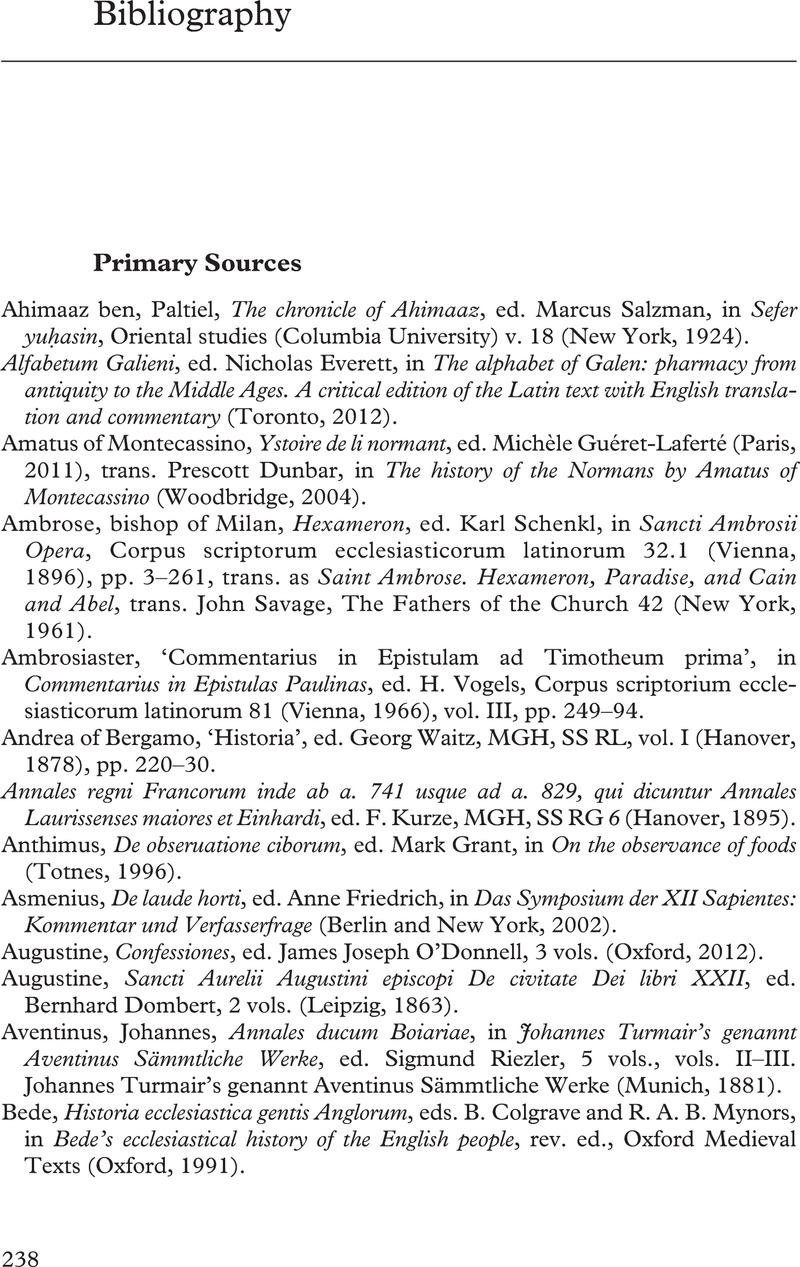Book contents
- Cultivating the City in Early Medieval Italy
- Cultivating the City in Early Medieval Italy
- Copyright page
- Dedication
- Contents
- Figures and Tables
- Acknowledgements
- Terms and Measurements
- Abbreviations
- Additional material
- 1 Urban Gardens and Gardeners
- 2 Patterns and Changes
- 3 The Shape of the Phenomenon
- 4 Alliances and Exchanges
- 5 Values and Ideals
- 6 Conspicuous Cultivation
- 7 Conclusions
- Bibliography
- Index
- References
Bibliography
Published online by Cambridge University Press: 08 March 2021
- Cultivating the City in Early Medieval Italy
- Cultivating the City in Early Medieval Italy
- Copyright page
- Dedication
- Contents
- Figures and Tables
- Acknowledgements
- Terms and Measurements
- Abbreviations
- Additional material
- 1 Urban Gardens and Gardeners
- 2 Patterns and Changes
- 3 The Shape of the Phenomenon
- 4 Alliances and Exchanges
- 5 Values and Ideals
- 6 Conspicuous Cultivation
- 7 Conclusions
- Bibliography
- Index
- References
Summary

- Type
- Chapter
- Information
- Cultivating the City in Early Medieval Italy , pp. 238 - 290Publisher: Cambridge University PressPrint publication year: 2021

